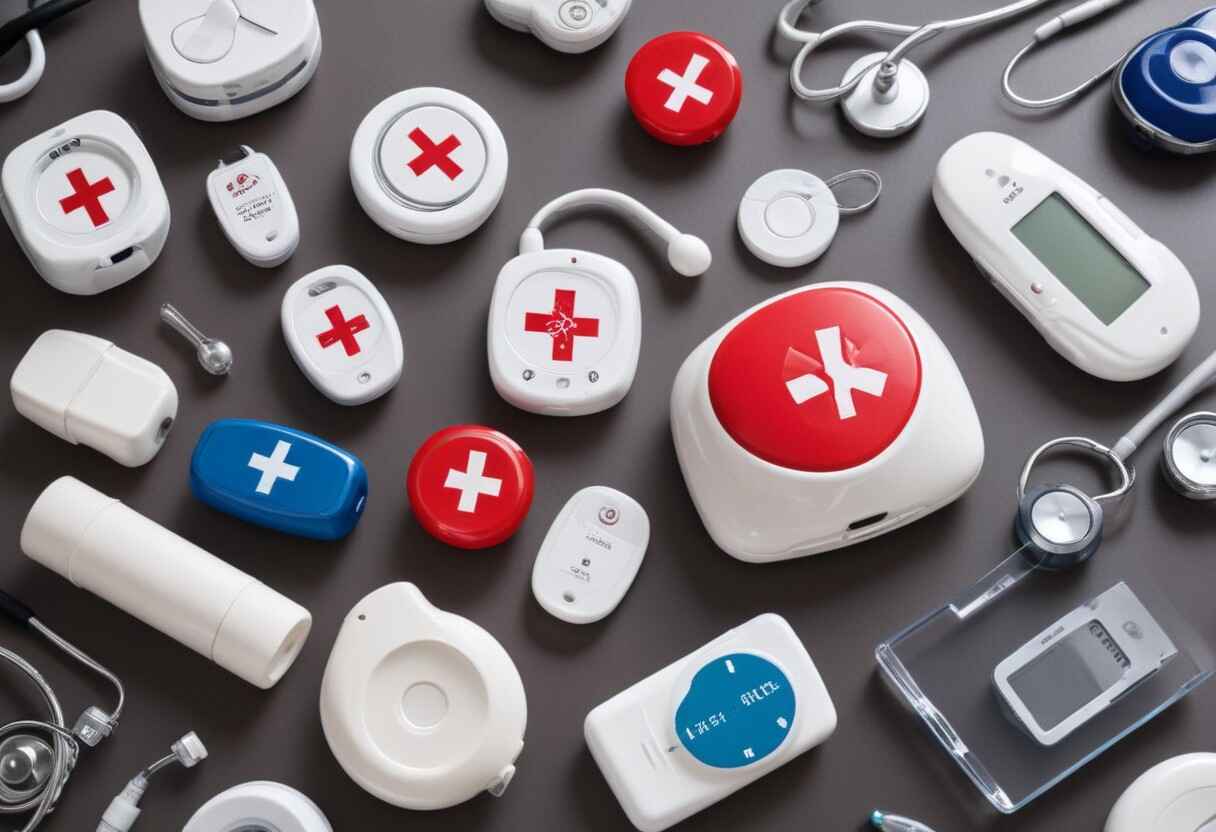As our loved ones get older, keeping them safe and healthy is very important. Medical alert devices are great tools that give families peace of mind and help seniors stay independent. These devices can call for help quickly in an emergency, making them crucial for senior safety. In this article, we’ll look at the different types of medical alert devices, how they work, and how to use them to protect seniors effectively.
What Are Medical Alert Devices?
Medical alert devices, also called personal emergency response systems (PERS), are wearable or stationary devices that let seniors call for help with the push of a button. They usually connect to a monitoring center where trained operators can send emergency services or contact family members. The main goal of these devices is to make sure seniors get quick help during medical emergencies, falls, or other urgent situations.
Types of Medical Alert Devices
Medical alert devices are important tools that help keep people, especially seniors and those with health issues, safe. They let users call for help in emergencies. Here are the main types:
- In-Home Systems: These are used at home and usually include a base unit connected to a landline or cell network, and a wearable pendant or wristband. They cover the entire home and yard.
- Mobile Systems: These are great for active seniors who go out often. They use cell networks and often have GPS tracking so emergency responders can find the user quickly.
- Fall Detection Devices: These smart devices can detect when someone falls and will automatically alert the monitoring center, even if the person can’t push the button themselves.
- Medical Alert Smartwatches: These devices are a mix of a medical alert system and a smartwatch. They can track health metrics, remind users to take their medications, and offer emergency assistance when needed.
Choosing the Right Medical Alert Device
Selecting the appropriate medical alert device is crucial for ensuring the safety of seniors and individuals with health concerns. Here are key factors to think about:
Type of Device
- In-Home Systems: Better for those who stay at home most of the time. Includes a base unit connected to a landline or cell network and wearable buttons.
- Mobile Systems: Ideal for active individuals who need protection both at home and outside. Often includes GPS tracking and cell connectivity, and can work with smartphones.
Features
- Automatic Fall Detection: Alerts the monitoring center automatically if a fall is detected, adding extra security.
- GPS Tracking: Important for mobile systems, especially for those with dementia or who wander.
- Two-Way Communication: Allows direct talking with emergency response teams through the device.
- Water Resistance: Crucial for wearables so they can be worn in the shower or bath where many accidents happen.
- Battery Life: Look for devices with long battery life or simple recharging to ensure they work all the time.
Monitoring Services
- 24/7 Monitoring: Ensure the service offers round-the-clock monitoring by professional operators who can send emergency help.
- Response Time: Check reviews for how fast they respond to emergencies.
- Customer Support: Good support is important for solving issues and answering questions quickly.
Costs
- Initial Costs: Some devices need to be bought upfront, while others can be leased.
- Monthly Fees: Ongoing monitoring usually has a monthly fee. Compare prices and what’s included.
- Contracts: Check the terms and cancellation policies. Some services may require long-term commitments.
Ease of Use
- User-Friendly Design: Devices should be simple to set up and use, especially for seniors who might not be tech-savvy.
- Wearability: Consider how comfortable and practical the wearables are, whether they are pendants, wristbands, or clip-on devices.
Setting Up the Medical Alert Device
After choosing the right medical alert device, setting it up properly is very important. Here’s how to do it:
- Read the Manual: Begin by reading the user manual that comes with the device. It will explain its features and how to get it ready for use.
- Charge the Device: Ensure the device is completely charged before using it. For devices that use batteries, find out how long they stay charged and set a routine for recharging them regularly.
- Install the Base Unit: If you’re using an in-home system, put the base unit in a central spot. Connect it to a phone line or cell network.
- Test the Device: To make sure the device works well, try calling the monitoring center for a test. It’s a good idea to do this test once a month.
- Wear the Device: Ensure the senior wears the device all the time, whether it’s a pendant, wristband, or smartwatch. It should be comfortable and not get in the way of daily activities.
Using the Medical Alert Device in Emergencies
Knowing how to use the medical alert device in an emergency is very important:
- Press the Button: In case of an emergency, the senior should press the button on their medical alert device. This action connects them to the monitoring center.
- Communicate Clearly: When connected, the senior should clearly explain their situation. If they can’t speak, the operator can still send help using the location data from the device.
- Stay Calm: Encourage the senior to stay calm while waiting for help. Reassure them that assistance is coming.
- Follow Up: After the emergency, check to make sure the device worked properly. If there were any problems, contact the service provider for help.
Conclusion
Medical alert devices are crucial for keeping seniors safe, giving families peace of mind knowing help is just a button press away. By learning about the types of devices, picking the better one, setting it up properly, and knowing how to use it during emergencies, you can greatly improve the safety and independence of your loved ones. Remember, while these devices are very helpful, adding other safety steps and checking in regularly will ensure comprehensive senior care and safety.
